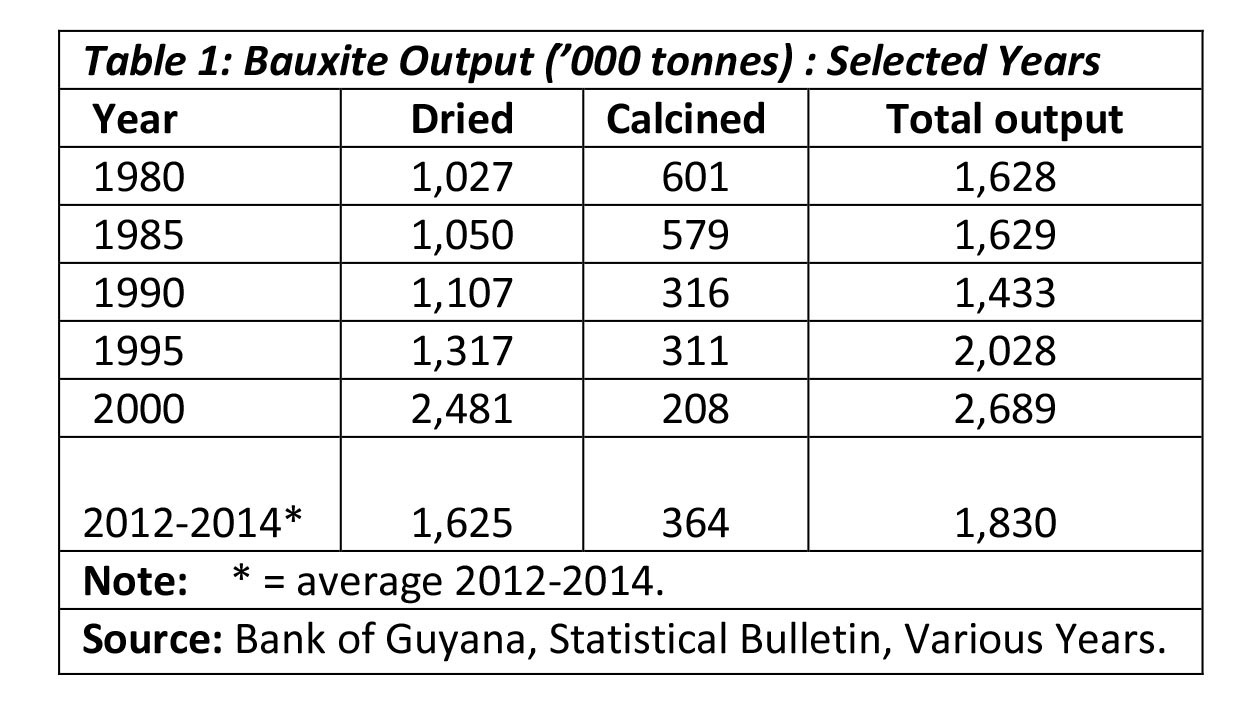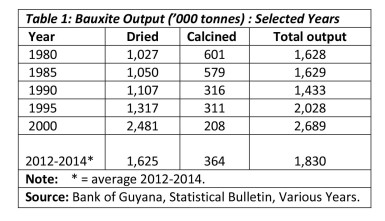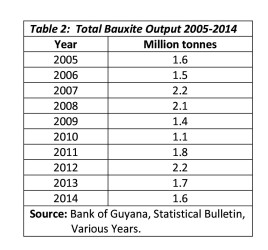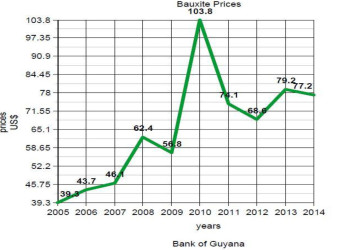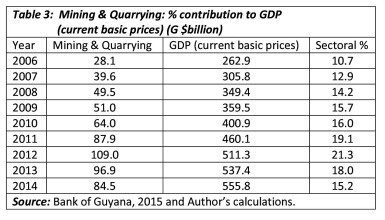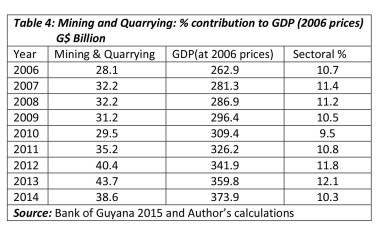Bauxite trends
As promised, this week I resume discussion of the bauxite industry in the context of Guyana’s extractive mineral resources export dependence. My plan is to report first on the economic performance of bauxite as a sub-sector and following that, transition the discussion to a brief presentation of  the basic profile of the mining and quarrying sector, as derived from Guyana’s national accounts tables.
the basic profile of the mining and quarrying sector, as derived from Guyana’s national accounts tables.
Table 1 below provides a broad indication of the performance of bauxite production since 1980 (over selective years). The Table shows these data separately for calcined and dried bauxite, as the two product markets, although related, respond sufficiently different to their unique market circumstances, therefore warranting their separation for reporting purposes.
Several features stand out in the Table. First, current production levels of calcined ore (defined as the average for 2012 to 2014) is about 364 thousand tonnes. This is substantially below the level that obtained at the beginning of the data period (1980), when it was equal to 601 thousand tonnes; the decline has been substantial.
Second, dried bauxite production, which peaked in the year 2000, stood at 2,481 thousand tonnes. This, however, fell to 1,625 thousand tonnes during the current period (2012-2014). This latter total was substantially above those for the selected years, 1980-1995. Third, the current total output level (2012-2014) is below that for the years 1995 and 2000.
Generally, overall the output of bauxite has tended to be quite volatile, as demonstrated for the case of gold. Thus Table 2, which reports on total output for the decade 2005-2014, shows total output has fluctuated from 1.1 million tonnes in 2010 to double that (2.2 million tonnes) in 2012.
Similar to the gold industry, the output volatility is related to fluctuations in the price. Guyana has received for its bauxite exports over the decade 2005-2014. The price received is revealed in Chart 1, which is reproduced from the January, 17th, 2016 column.
The mining and quarrying sector
Gold and bauxite production are easily the leading mineral sub-sectors, and taken together they account for the overwhelming bulk of the GDP generated from the mineral export sector. This sector is classified as ‘Mining & Quarrying’, in Guyana’s national accounts. Tables 3 and 4 below show the performance of this sector and its contribution both to Guyana’s GDP at current basic prices and at constant 2006 prices for the period 2006-2014.
The striking features of the current basic prices data series are 1) the mean (average) contribution of the sector to Guyana’s GDP for 2006 to 2014 has been 15.9 percent. Annual contributions have ranged from 10.7 percent in 2006 to 21.3 percent in 2012. Similarly, at constant 2006 prices, the contribution of the sector to Guyana’s GDP (2006 to 2014) has averaged 10.9 per cent. And, the corresponding range, has been from 9.5 per cent of GDP in 2010 to 12.1 per cent in 2013.
Perhaps more significantly, Table 5 below reveals the contribution of the mining and quarrying sector to Guyana’s GDP growth. The growth of the sector has fluctuated widely, from a high negative (-12 per cent) in 2014 to a high positive (19 per cent) in 2012. Thus it can be recognized that both the leading mineral sub-sectors (gold and bauxite) make substantial contributions to volatile growth in Guyana’s GDP.
